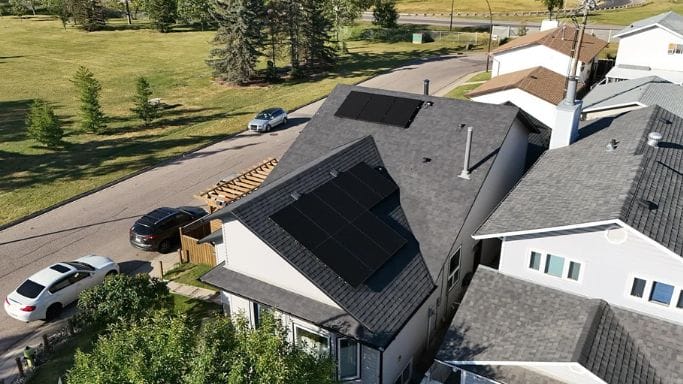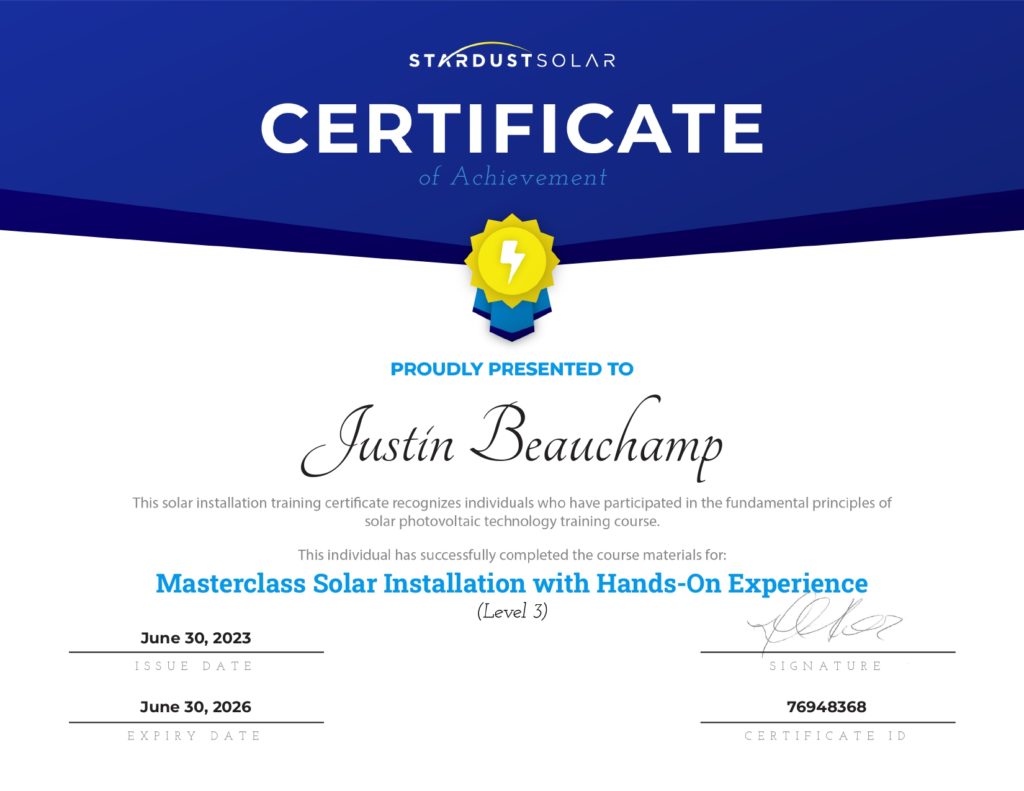Maximizing the sun’s power through household solar panels is a smart solution for reducing energy bills and carbon footprint or greenhouse gas emissions. But you might not know that your solar panel system can be greatly affected by how much energy it produces depending on the weather conditions.
Whether it be intense sun, cloudy days, or snow-filled winters, it is important to understand how your solar panel systems work in different climates. Solar panels save big, especially with rising energy costs, but it does not come out producing consistently at the same level.
So, you must learn how different weather patterns affect panel production, how much energy your home solar energy system can generate, and whether monocrystalline or traditional solar panels are worth the investment.
Solar Panel Performance on Various Weather Coditions: Debunking Myths and Maximizing Efficiency
Solar power is a good source of electricity. While photovoltaic (PV) systems are designed to operate under various weather conditions, many are unaware that they can still perform efficiently, even on cloudy days or with rainwater on them.
January to March: Cloud Cover and Snowfall, Shorter Days
Photovoltaic cells generate electricity from sun rays, not air temperature, so they still work in cold weather, even with very low temperatures. Since the sun rises daily, your solar system can still absorb the sun’s power even in extremely cold climates.
- While snow accumulation can temporarily reduce electricity produced by blocking sun rays, you can counter this by tilting the cell properly to return to normal operation after a snowfall. Besides, most monocrystalline panels are designed to allow snow to slide off easily.
- Cloudy days may sometimes diminish the amount of photovoltaic available, which can lead to lower power production. But, cells can still generate excess power even on overcast days, thanks to the sun’s diffused light.
Optimizing PV Performance During These Months
| Regular Maintenance | Keep modules clear of snow and debris to maximize how much sunlight they absorb. |
| Monitor Energy Production | Use a monitoring system to track performance and promptly identify issues |
The main point here is that despite the reduced sunlight, a well-installed system can still save homeowners money while reducing greenhouse gas emissions during the winter.
April to June: Increasing Sunlight, Spring Rain
Spring brings longer days and increasing sunlight, which significantly boosts the efficiency of photovoltaic systems. While spring rain showers can intermittently affect the amount of electricity-generated, but as temperatures rise, the efficiency of panels increase.
Key Considerations For This Season
- Cleaning and Maintenance: Regularly clean the cell to remove pollen, dust, and spring rain residues that can hinder performance.
- Maximize Sun Exposure: Ensure that trees or structures do not cast shadows on your PV cells as daylight increases.
- Use Net Metering: Use net metering to manage excess solar energy produced during peak hours, reducing your electricity costs further.
Installing solar panels during this period can capitalize on the optimal balance between increasing daylight and manageable weather conditions.
July to September: Peak Sunlight, Dry and Clear Conditions
Summer months in Canada offer peak daylight and predominantly dry, clear weather, making it the best period to install solar panels. The extended daylight hours and high irradiance levels maximize the electricity produced by your photovoltaic system.
How to Fully Benefit During These Months
- Optimize Panel Orientation: The closer a panel is to being perpendicular to the Sun’s rays, the more power it produces. That’s why facing your home’s photovoltaic panels directly south is ideal for maximum output.
- Monitor Usage: Align your energy usage with peak production times to maximize the benefits of excess energy.
- Consider Solar Plus Storage: Implementing battery storage can help store excess electricity generated during sunny days for use during cloudy periods or power outages.
The bright summer rays are ideal for solar panel installation. With longer days, peak performance hours, usually from 10 am to 4 pm, can extend by an hour or two. Clear, uninterrupted daylight for extended periods delivers the best results.
October to December: Decreasing Sunlight, Increased Rain and Wind
During Canada’s fall and early winter months, PV performance remains consistent on windy days because wind doesn’t affect the sun rays reaching the modules. However, in the event of strong cyclonic winds, there’s a risk of damage, but modern solar installation techniques help ensure that cells remain secure even in extreme conditions.
As rainfall increases, photovoltaic modules continue to perform reliably. They are fully waterproof, so constant rain over days or weeks won’t damage them. In fact, the rain can be beneficial—it naturally cleans off dust and dirt that may have built up, leaving the cell with a clear surface to better absorb sun rays when it’s available.
Although power production may not be as high as in summer, this natural cleaning helps maintain optimal performance during the season.
Best Panel Types For This Season
Monocrystalline
According to NREL (National Renewable Energy Laboratory), these are efficient at converting sunlight into electricity, making them ideal for low-light situations. One of the best samples is MAG Solar’s Longi 410 54-Cell Module. Its single-crystal structure effectively captures and uses sunlight, even on overcast days. This makes it reliable in areas with frequent cloud cover or shorter daylight hours.
Thin-Film
These cells excel in low-light conditions, especially during rainy months. They capture a wider range of light to ensure effective electricity production and reduced carbon emissions even on cloudy days. Their lightweight and flexible design makes them useful when sunlight is scarce, guaranteeing a consistent flow of electricity in bad climates.
Bifacial
Bifacial PV cells are designed to absorb light from the front and back, thanks to a glass back surface or transparent sheet. Like MAG Solar’s Longi 445 72-Cell Module, these modules capture reflected sunlight from nearby surfaces like the ground or buildings. The double-sided design produces more electricity from the same space and performs better in low-light conditions or partially shaded days.
Estimated Daily Output Per Climate
| System Size | Cloudy | Rainy | Sunny |
| 10kW | 18kWh | 4–8kWh | 38kWh |
| 8kW | 15kWh | 3–6kWh | 32kWh |
| 5kW | 10kWh | 2–4kWh | 20kWh |
| 3kW | 6kWh | 1–3kWh | 12kWh |
| 1kW | 2kWh | 0.5–1.5kWh | 4kWh |
Note: On cloudy days, PV cells can produce 30% to 50% of their maximum output, while during heavy rain, they generate around 10% to 20% of their peak capacity.

Make Sure Your Solar Panels Work
Understanding how various climate conditions affect your household solar panels can help maximize their efficiency. While modules can perform well year-round, their output may fluctuate depending on sunlight, cloud cover, rain, and temperature. By staying informed about these influences, you can better manage your power production, maintain your system, and ensure you’re getting the most out of your investment.
Choose the right installer, like MAG Solar, for cost-effective solutions tailored to perform in all weather conditions. Using advanced PV modules, we can optimize power production regardless of the climate. Don’t let unpredictable climate cut your energy savings—go solar wisely with a reliable solar company.
Frequently Asked Questions
At what temperature do panels perform best?
PV modules are most efficient at around 25°C (77°F). Cooler temperatures help preserve peak electrical conductivity and optimize the performance of the photovoltaic cells.
How much power can I produce with a PV system?
A standard residential panel with an output of 250 to 400 watts can generate about 546 to 874 kilowatt-hour (kWh) of electricity annually if your home receives six hours of sunlight daily.
What is the best environment for photovoltaic energy?
The optimal environment for PV features high PV irradiance, consistent sunshine, and cooler temperatures. Areas with extended daylight hours and minimal cloud cover generally produce the highest power output.

